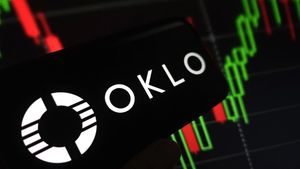
As the calendar turns to late September 2025, a pervasive sentiment among many market analysts suggests that while valuations remain elevated, the current stock market landscape notably diverges from the precarious conditions that preceded the dot-com bust of 1999 or the global financial crisis of 2008. This perspective offers a nuanced blend of cautious optimism, advising investors to temper expectations for outsized returns while emphasizing fundamental strength over speculative fervor. The S&P 500 (NYSEARCA:SPY), having enjoyed a robust run, now faces a critical juncture where discerning genuine growth from unsustainable hype is paramount.
The immediate implication for investors is a call for strategic recalibration rather than panic. While the specter of significant corrections looms due to rich valuations, the underlying economic and corporate fundamentals, particularly within the technology sector, appear more robust than during the late 1990s. The banking system, fortified by post-2008 reforms, also presents a stark contrast to the systemic fragility witnessed nearly two decades ago. This assessment implies that any potential economic slowdown or market downturn, while possibly painful, may not necessitate the extreme governmental and central bank interventions characteristic of the 2008-2009 period.
Distinguishing the Present from Past Crises
The current market narrative is heavily influenced by a rigorous comparison to two of the most significant downturns in recent financial history: the dot-com bubble burst of 1999-2000 and the 2008 financial crisis. Analysts largely contend that while certain superficial similarities exist, the underlying structural and fundamental dynamics of today's market are distinctly different. A primary differentiator from 1999 is the quality of earnings and business models, particularly among the leading technology companies. Unlike the myriad of unprofitable internet startups that drove the dot-com frenzy, today's mega-cap tech and AI-centric firms generally boast strong balance sheets, substantial cash flows, and robust earnings growth, which are projected to accelerate in 2025. These companies are innovating with transformative technologies like artificial intelligence, underpinning their valuations with tangible performance rather than pure speculation.
Furthermore, the U.S. banking system stands as a bulwark against a repeat of the 2008 crisis. Stricter regulations, increased capital requirements, and enhanced oversight have significantly de-risked the financial sector. This institutional resilience provides a crucial buffer against systemic collapse, a stark contrast to the interconnected and opaque risks that nearly brought down the global financial system fifteen years ago. Government intervention and fiscal stimulus, which have become more commonplace since 2008 and particularly post-COVID, are also viewed as potential stabilizers, capable of mitigating severe economic contractions and preventing prolonged bear markets.
The market's resilience is also attributed to a broader economic context where global growth, though slowing, is not collapsing. Corporate earnings, for the most part, continue to beat expectations, providing fundamental support. While the market has seen significant concentration in a few "Magnificent Seven" (AI-driven tech) stocks, their leadership is often seen as driven by genuine innovation and strong fundamentals, rather than a speculative free-for-all. Importantly, the overall investor sentiment, while exhibiting some exuberance in specific pockets, is generally not characterized by the "stupid and unhinged" speculative fervor that marked the late 1990s. This more measured approach by a broader swathe of investors suggests a healthier, albeit richly valued, market environment.
However, the picture is not without its caveats. The "Buffett indicator," which compares the total stock market capitalization to GDP, is currently significantly higher than during the dot-com bubble, suggesting that future returns from these elevated valuations may be disappointing. Additionally, while the market may not be a carbon copy of 1999 or 2008, the possibility of a sharp correction (10-20%) remains elevated due to these rich valuations and the unpredictable nature of Federal Reserve actions regarding interest rates. Some contrarian voices, like Harry Dent, continue to warn of a potential "everything" bubble burst, possibly worse than 2008, in early to mid-2025, underscoring the ongoing debate and diverse range of opinions regarding the market's trajectory.
Companies Navigating a Differentiated Market Landscape
In a market environment where the ghosts of 1999 and 2008 are largely dismissed by many, the landscape for public companies presents a complex interplay of opportunities and challenges. Companies with robust fundamentals, strong earnings growth, and clear competitive advantages are positioned to thrive, while those lacking these attributes, particularly in highly valued sectors, could face significant headwinds if investor sentiment shifts. The S&P 500 (NYSEARCA:SPY) has seen its gains heavily concentrated in the "Magnificent Seven" – a group of mega-cap technology companies including Apple (NASDAQ: AAPL), Microsoft (NASDAQ: MSFT), Amazon (NASDAQ: AMZN), Alphabet (NASDAQ: GOOGL), Meta Platforms (NASDAQ: META), NVIDIA (NASDAQ: NVDA), and Tesla (NASDAQ: TSLA). These companies are generally seen as "winners" due to their strong earnings, innovation in AI, and market dominance. Their valuations, while high, are often argued to be supported by their transformative impact and superior financial performance.
However, the narrowing gap in earnings growth projected for 2025 between these tech giants and the broader S&P 500 suggests a potential broadening of market leadership. This could benefit a wider array of companies, particularly those in sectors that have been overlooked during the AI-driven rally. Mid-cap and small-cap companies, which have lagged their larger counterparts, might see renewed investor interest as the bull market potentially broadens beyond the tech behemoths. Companies with strong free cash flow generation and those demonstrating pricing power in an inflationary environment are also likely to be favored.
Conversely, companies that exhibit speculative characteristics, such as high valuations without commensurate earnings or a clear path to profitability, could be "losers" if the market becomes more discerning. Any company heavily reliant on debt in a higher interest rate environment could also face pressure, although the Federal Reserve's rate cuts initiated in September 2024 are expected to alleviate some of this burden. Sectors that are highly sensitive to economic cycles, like certain industrials or consumer discretionary companies, might experience volatility if a slowdown materializes, even if it's not a catastrophic one like 2008. The key takeaway for corporate performance in this differentiated market is the emphasis on fundamental strength and sustainable business models over pure growth narratives or speculative appeal.
Broader Significance and Historical Context
The prevailing market outlook, which largely dismisses direct parallels to 1999 or 2008, carries significant implications for broader industry trends, regulatory landscapes, and future economic policy. This perspective suggests that the current era is defined by unique characteristics, primarily driven by technological innovation (especially AI), robust corporate earnings among market leaders, and a more resilient financial system. The focus on AI, in particular, points to a new wave of industrial transformation, potentially impacting every sector from healthcare to manufacturing. Companies that successfully integrate AI into their operations or develop critical AI infrastructure, like NVIDIA (NASDAQ: NVDA) with its specialized chips, are not just leading the market but are also shaping the future of global commerce.
The potential ripple effects extend across various industries. For instance, the continued strength of mega-cap tech could put pressure on traditional businesses to innovate or risk obsolescence. Partners and suppliers within the tech ecosystem, from cloud service providers to semiconductor manufacturers, are likely to benefit from sustained investment in AI and digital transformation. However, excessive concentration of market power in a few tech giants could also attract increased regulatory scrutiny, particularly regarding antitrust concerns and data privacy. While the current market isn't seen as a bubble akin to 1999, regulators are likely to remain vigilant to prevent anti-competitive practices or financial instability.
Historically, periods of significant technological advancement have often been accompanied by shifts in market leadership and economic paradigms. While the dot-com bubble was characterized by overvaluation of nascent internet companies, the current AI boom is often compared to earlier transformative technologies like electricity or the internet itself, where initial exuberance eventually gave way to sustained, fundamental growth. The absence of a systemic banking crisis, as seen in 2008, allows for a different set of policy responses. Instead of bailouts and liquidity injections to prevent collapse, future policy might focus more on managing inflation, ensuring equitable growth, and adapting to the societal impacts of AI. This differentiated historical context suggests that while caution is warranted due to high valuations, the nature of potential challenges and opportunities ahead is distinct from previous crises.
What Comes Next: Navigating a Nuanced Future
Looking ahead, the stock market's trajectory, while seemingly diverging from past crises, is nonetheless poised for a period of dynamic evolution. In the short term, investors should anticipate continued volatility and more modest returns compared to the robust gains of 2024. The elevated valuations across the S&P 500 (NYSEARCA:SPY) suggest that significant upward movements will likely be driven by sustained earnings growth rather than multiple expansion. A 10-20% market correction remains a distinct possibility, serving as a necessary recalibration rather than a harbinger of collapse. The ongoing impact of Federal Reserve rate cuts, initiated in September 2024, will be a critical factor, potentially shifting monetary policy from a headwind to a tailwind, stimulating economic growth and supporting corporate earnings, particularly if the pattern aligns with non-recessionary rate cut cycles of the past.
In the long term, the market is likely to see a broadening of leadership beyond the "Magnificent Seven." As the benefits of AI and other technological innovations diffuse across the economy, opportunities may emerge in sectors and companies that have been overshadowed. This could lead to a more diversified market, where value-oriented stocks and smaller-cap companies gain traction. Strategic pivots for companies will involve continued investment in innovation, especially AI, while maintaining fiscal discipline. Businesses that can adapt to evolving consumer preferences, supply chain dynamics, and geopolitical shifts will be best positioned for sustained success.
Potential scenarios range from a "soft landing" where inflation cools without a severe recession, leading to continued, albeit slower, economic growth, to a more challenging environment if inflationary pressures persist or if global geopolitical tensions escalate. Market opportunities include areas like renewable energy, healthcare innovation, and infrastructure development, driven by both technological advancement and government initiatives. Challenges include managing the risks associated with AI (e.g., job displacement, ethical concerns), potential regulatory headwinds, and the ever-present threat of unforeseen "black swan" events. Investors should remain agile, focusing on diversified portfolios, high-quality companies with strong fundamentals, and a long-term perspective, rather than chasing speculative trends.
Comprehensive Wrap-Up: A Market in Transition
In summary, the prevailing sentiment among financial analysts on September 26, 2025, is that the current stock market, while exhibiting elevated valuations, does not mirror the systemic risks or speculative excesses that characterized 1999 or 2008. Key takeaways include the robust fundamentals of leading technology companies, a significantly stronger banking system, and the active role of government intervention in mitigating economic downturns. This confluence of factors suggests that while market corrections are always possible and even likely, a full-blown crisis akin to the dot-com bust or the financial meltdown is not on the immediate horizon.
Moving forward, the market is expected to deliver more modest and potentially volatile returns. The era of easy, outsized gains may be tapering, necessitating a more selective and disciplined approach from investors. The "Magnificent Seven" tech giants will likely continue to play a significant role, but a broadening of market leadership is anticipated as other sectors and companies capitalize on technological advancements and economic shifts. Investors should watch for further developments in monetary policy, particularly the pace and impact of Federal Reserve rate cuts, as well as corporate earnings reports for signs of sustained growth or emerging weaknesses beyond the current market darlings.
Ultimately, the significance of this differentiated market outlook lies in its call for a nuanced investment strategy. Blindly chasing hype or succumbing to fear based on historical parallels would be a misstep. Instead, a focus on fundamental strength, diversification, and a clear understanding of the unique economic and technological drivers of the current market will be crucial for navigating the months and years ahead. The market is in transition, demanding vigilance, adaptability, and a long-term perspective to capitalize on opportunities while mitigating risks.
This content is intended for informational purposes only and is not financial advice





